Case report: IM ketamine or IN esketamine as a treatment in four patients with MDD & comorbid anorexia
Frontiers in Psychiatry | Published 15 May 2023
Excited to see this case report reach print—and many thanks to our colleagues at King's College London for collaborating on this paper with us!
Introduction: A comorbid diagnosis of a depressive disorder is a negative prognostic factor for individuals with AN, and novel treatments are needed to target depressive symptoms in this population. One emerging promising treatment for depressive disorders is ketamine, although there is less research investigating the use of ketamine for alleviating depression in people with AN.
Case Report: This study reports on four patients with a lifetime diagnosis of AN and a comorbid diagnosis of major depressive disorder who received either intramuscular ketamine (n = 2) or intranasal esketamine (n = 2) treatment from a private psychiatric clinic. Depressive symptomatology (PHQ-9) was measured prior to (es)ketamine administration on every dosing session and adverse effects were recorded during and after dosing. All patients reported a subjective decrease in depression, although only those administered intranasal esketamine showed a reduction in PHQ-9 depression scores over time. Number of doses ranged from 3 to 23. All patients tolerated treatment well and no serious adverse effects emerged, however nausea/vomiting was experienced by one patient on one dosing session. Weight remained stable in all cases, although notably across all patients, weight at the beginning of treatment was within a “healthy” range.
Discussion: These findings suggest that (es)ketamine may reduce depressive symptoms in people with major depressive disorder and a comorbid diagnosis of AN. Future feasibility and pilot trials are warranted in order to elicit robust data on efficacy, acceptability, safety and tolerability.

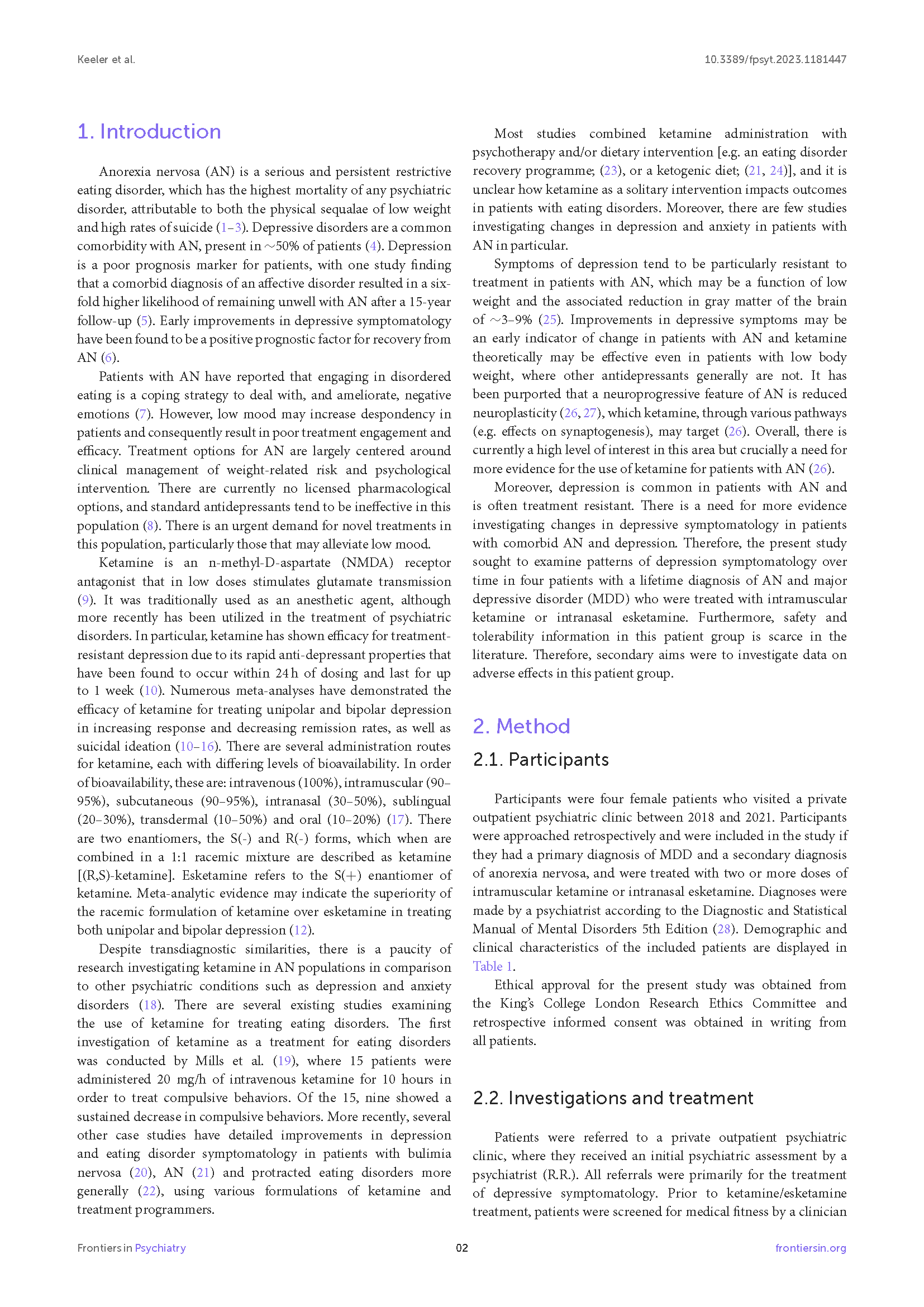
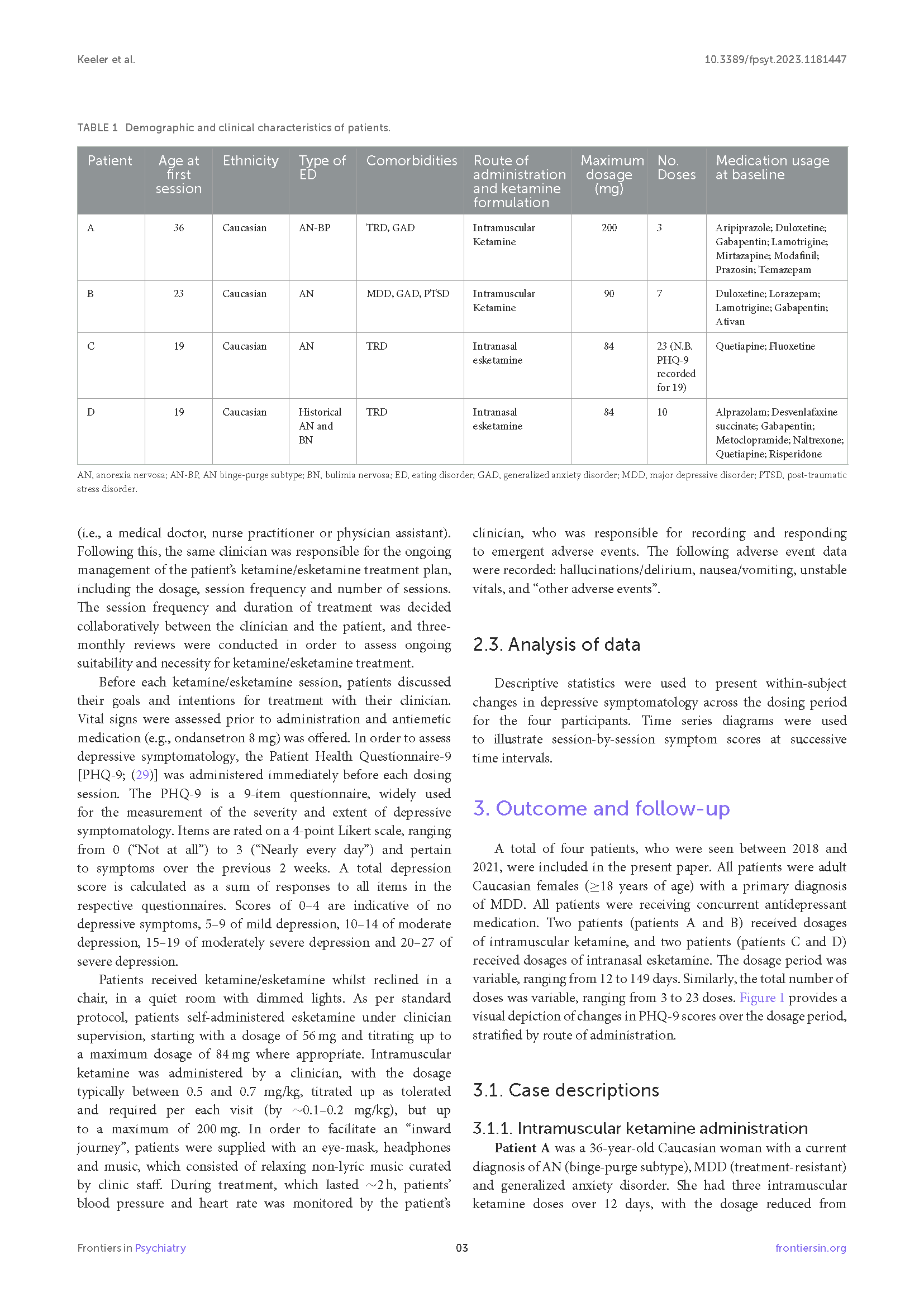
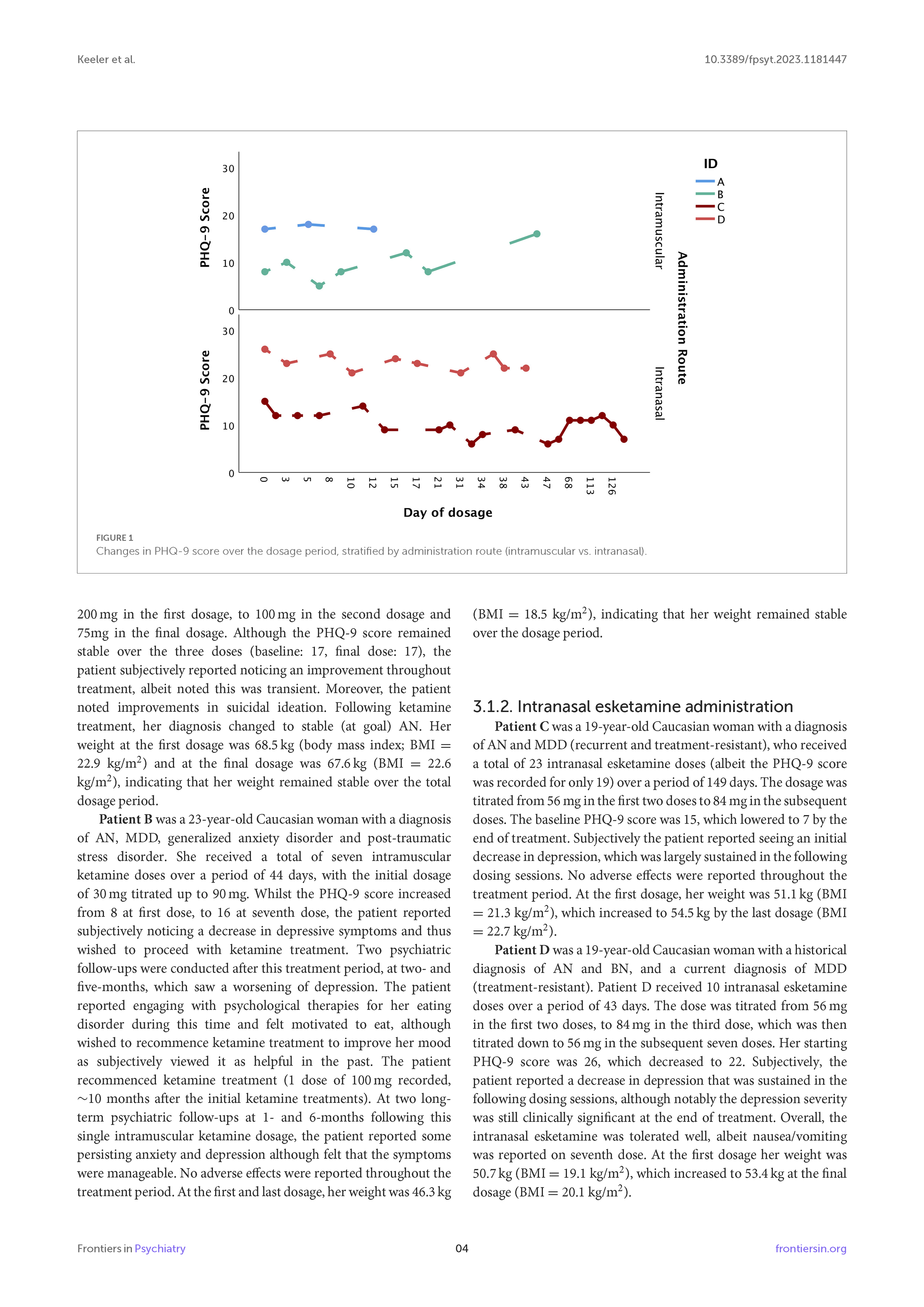
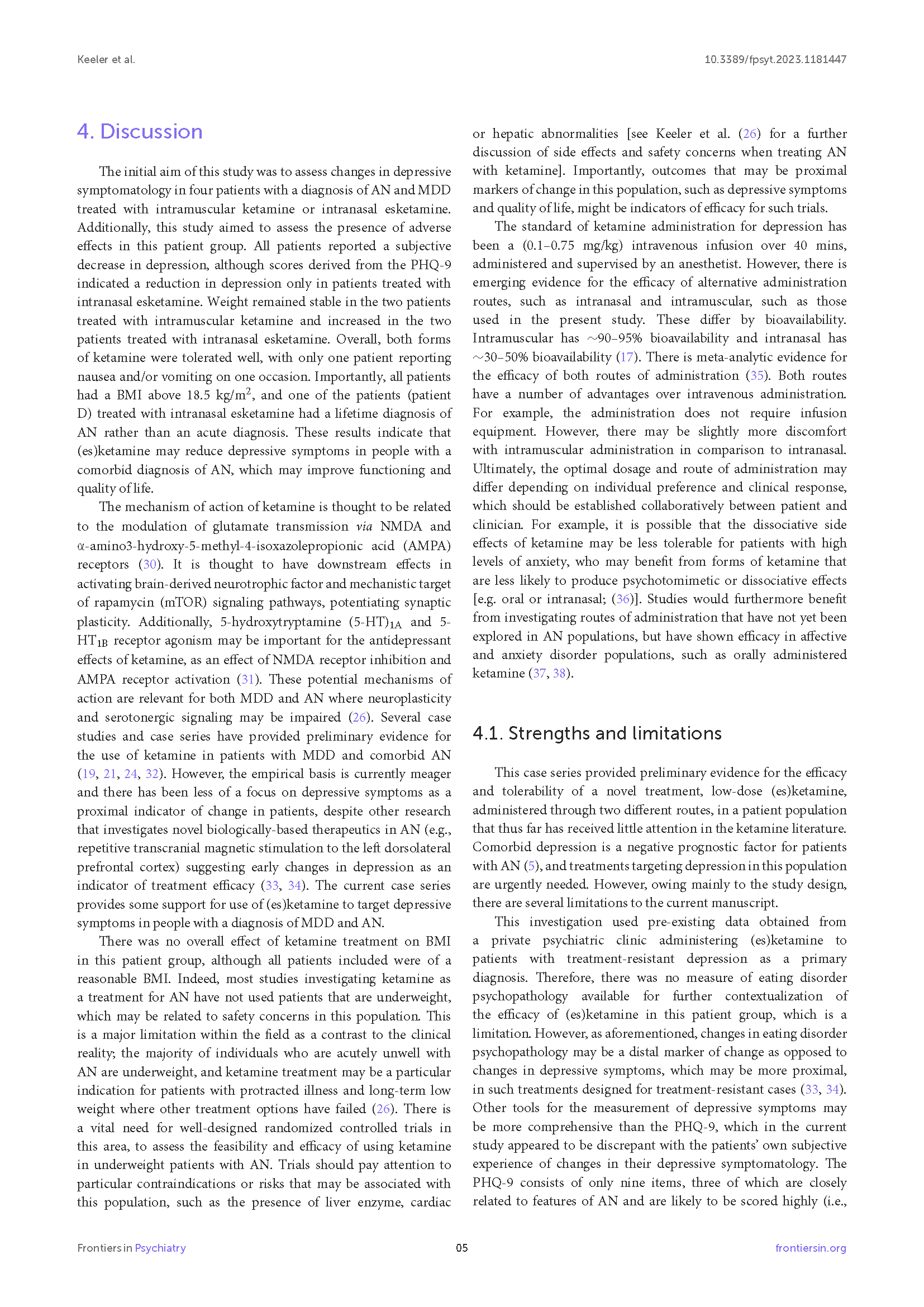
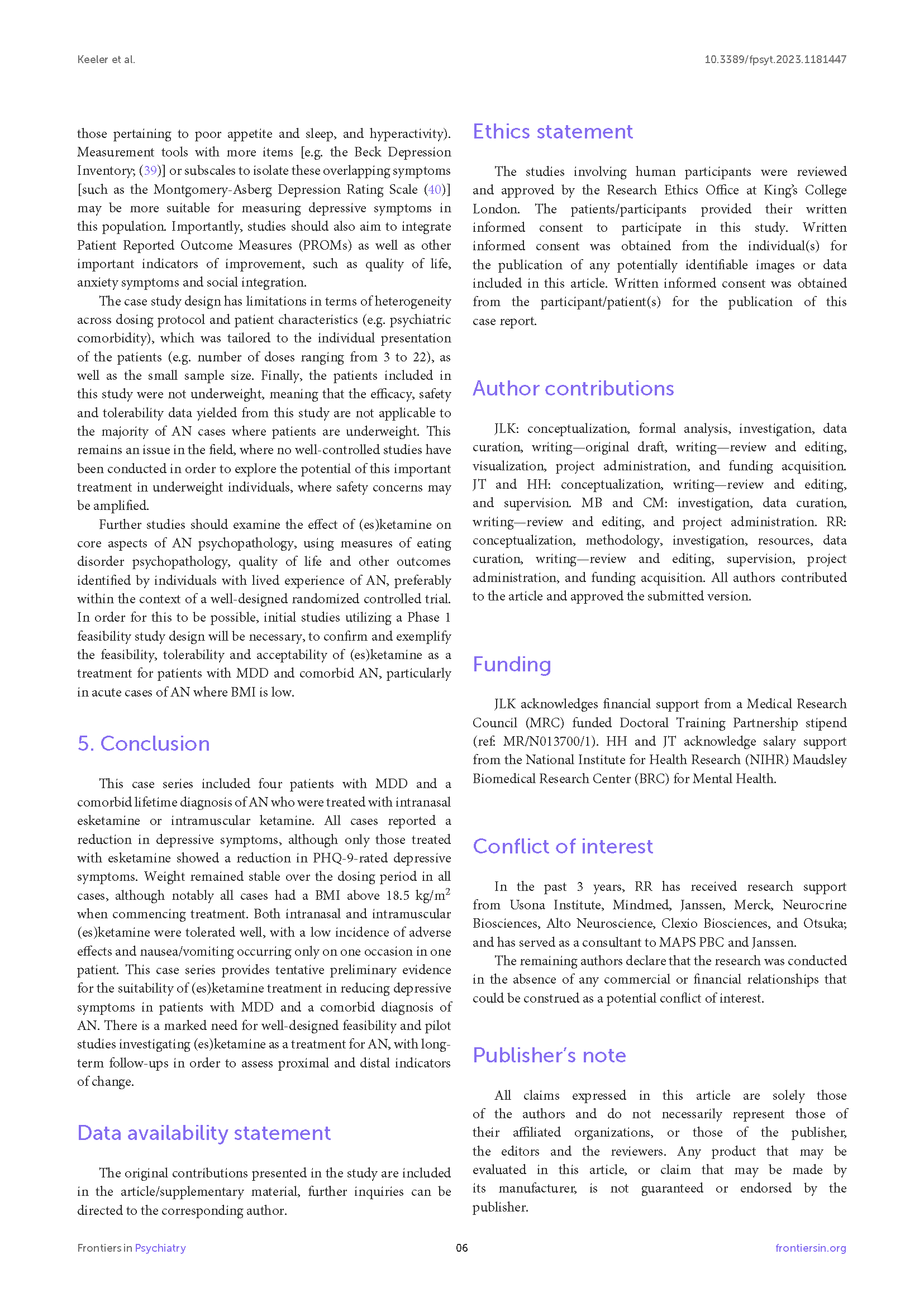
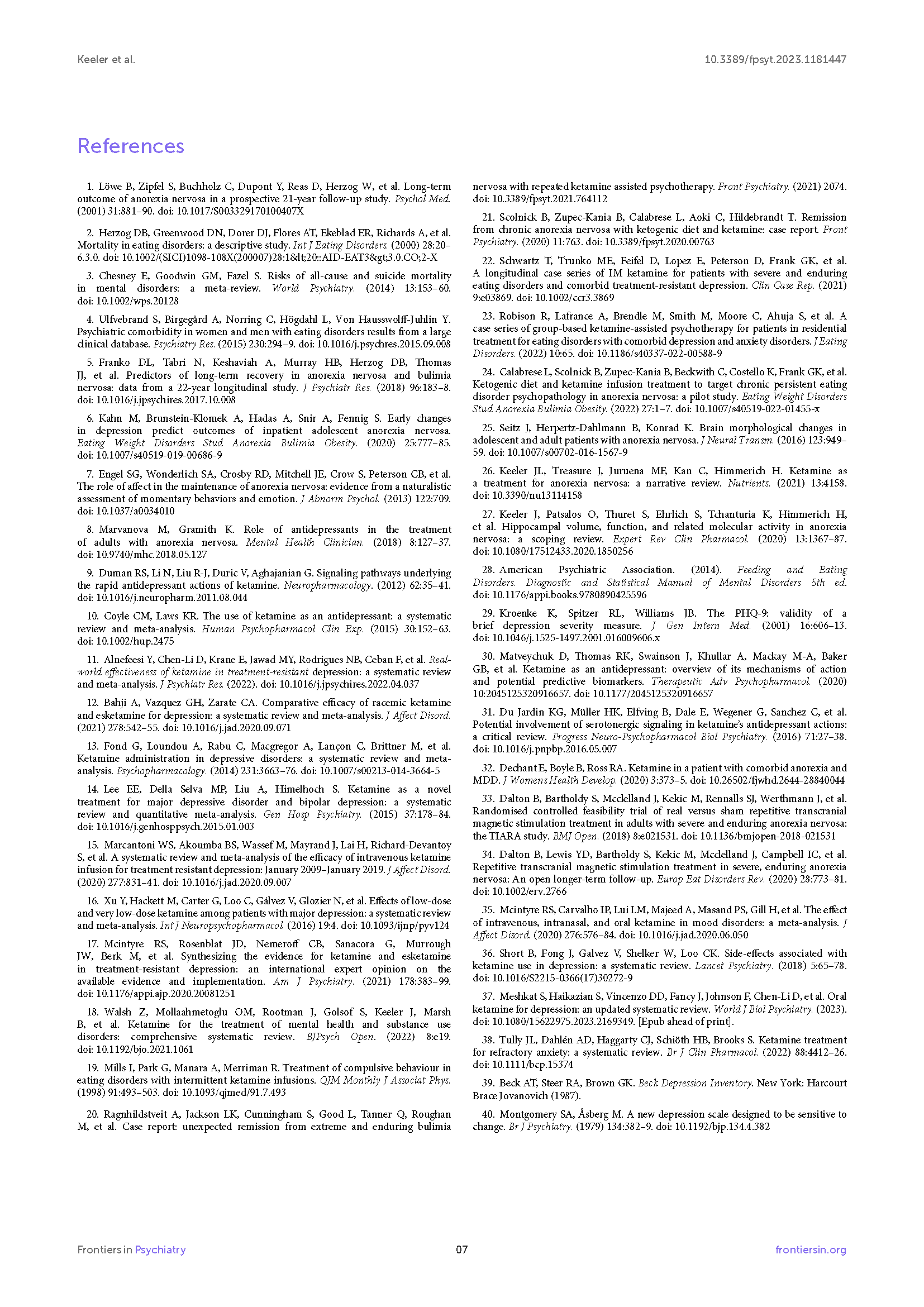
Citation
Keeler JL, Treasure J, Himmerich H, Brendle M, Moore C, Robison R. Case report: Intramuscular ketamine or intranasal esketamine as a treatment in four patients with major depressive disorder and comorbid anorexia nervosa, Frontiers in Psychiatry. 2023. DOI: 10.3389/fpsyt.2023.1181447.

